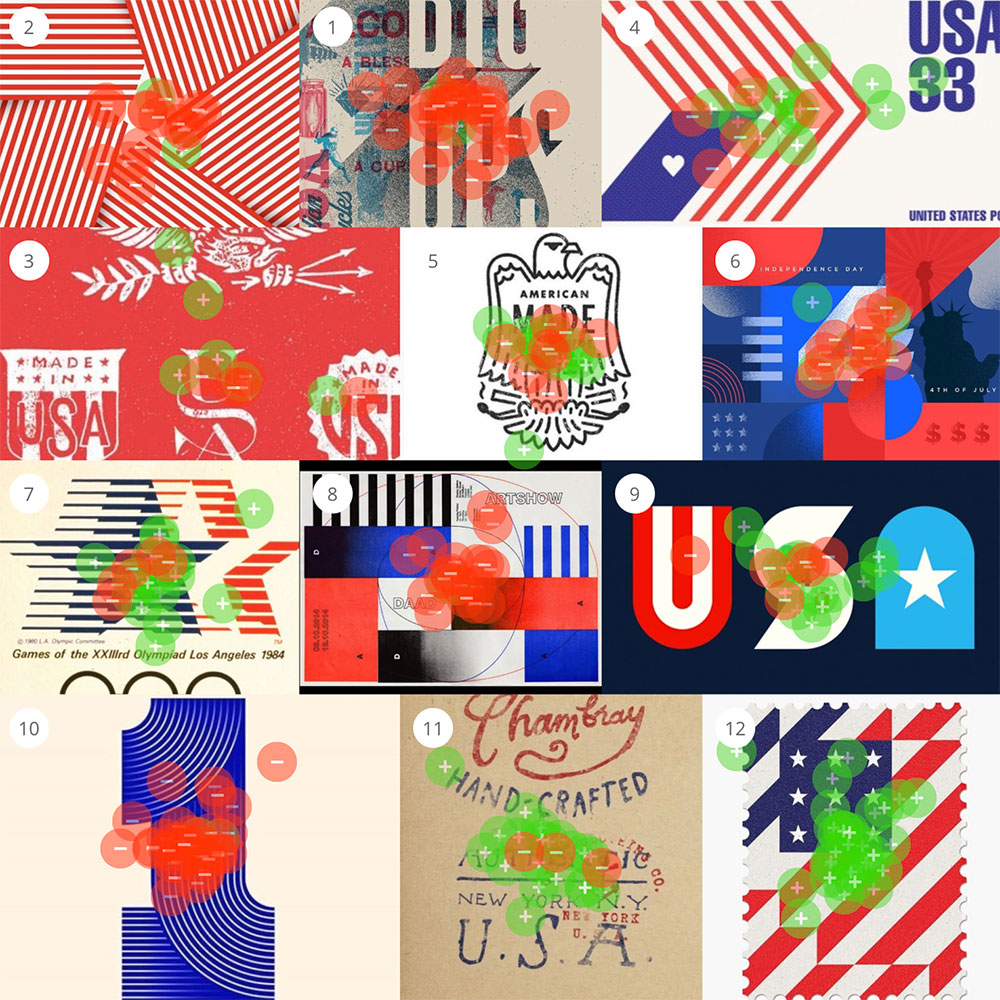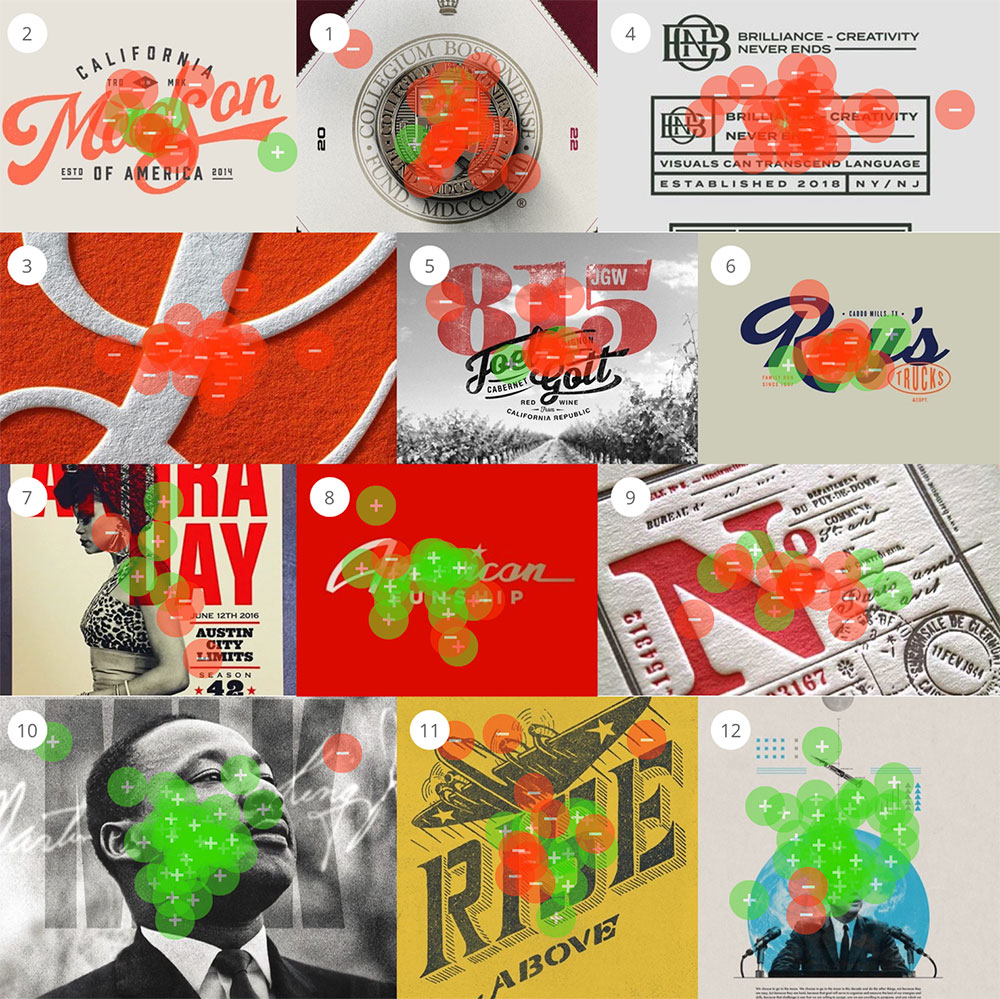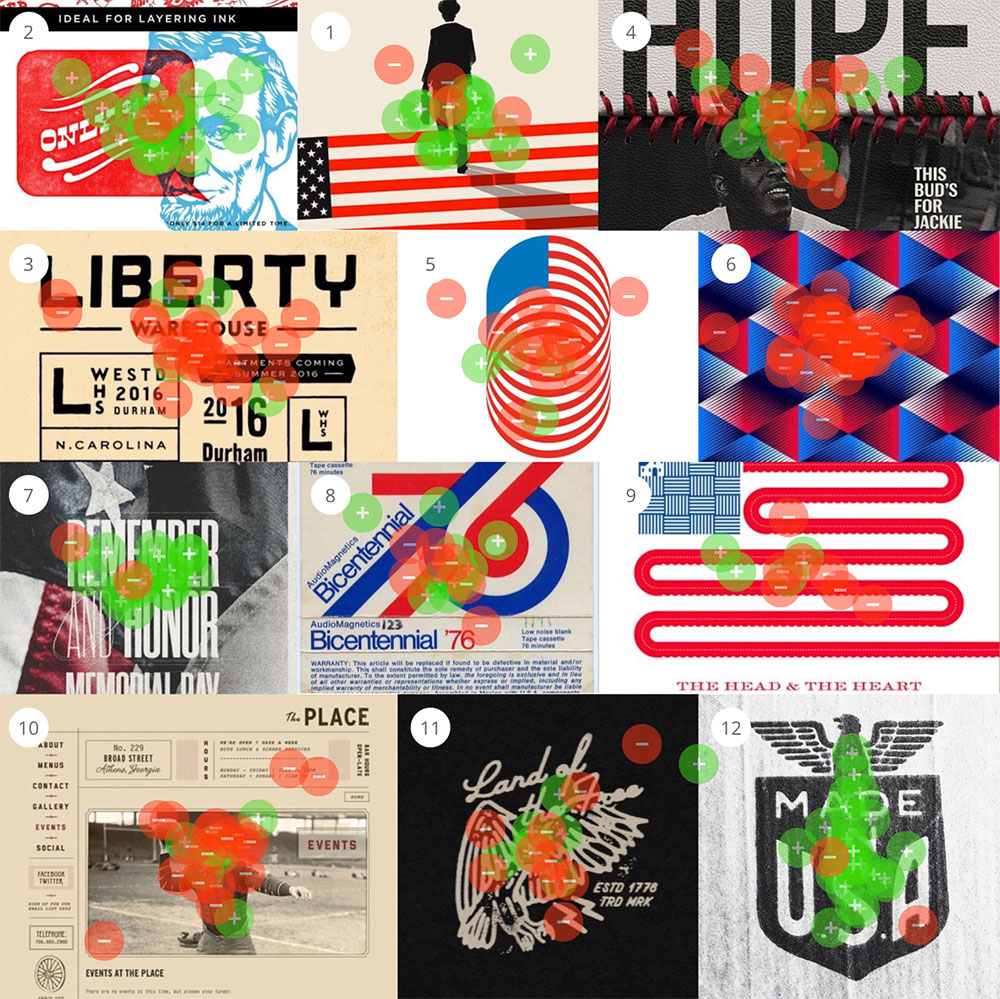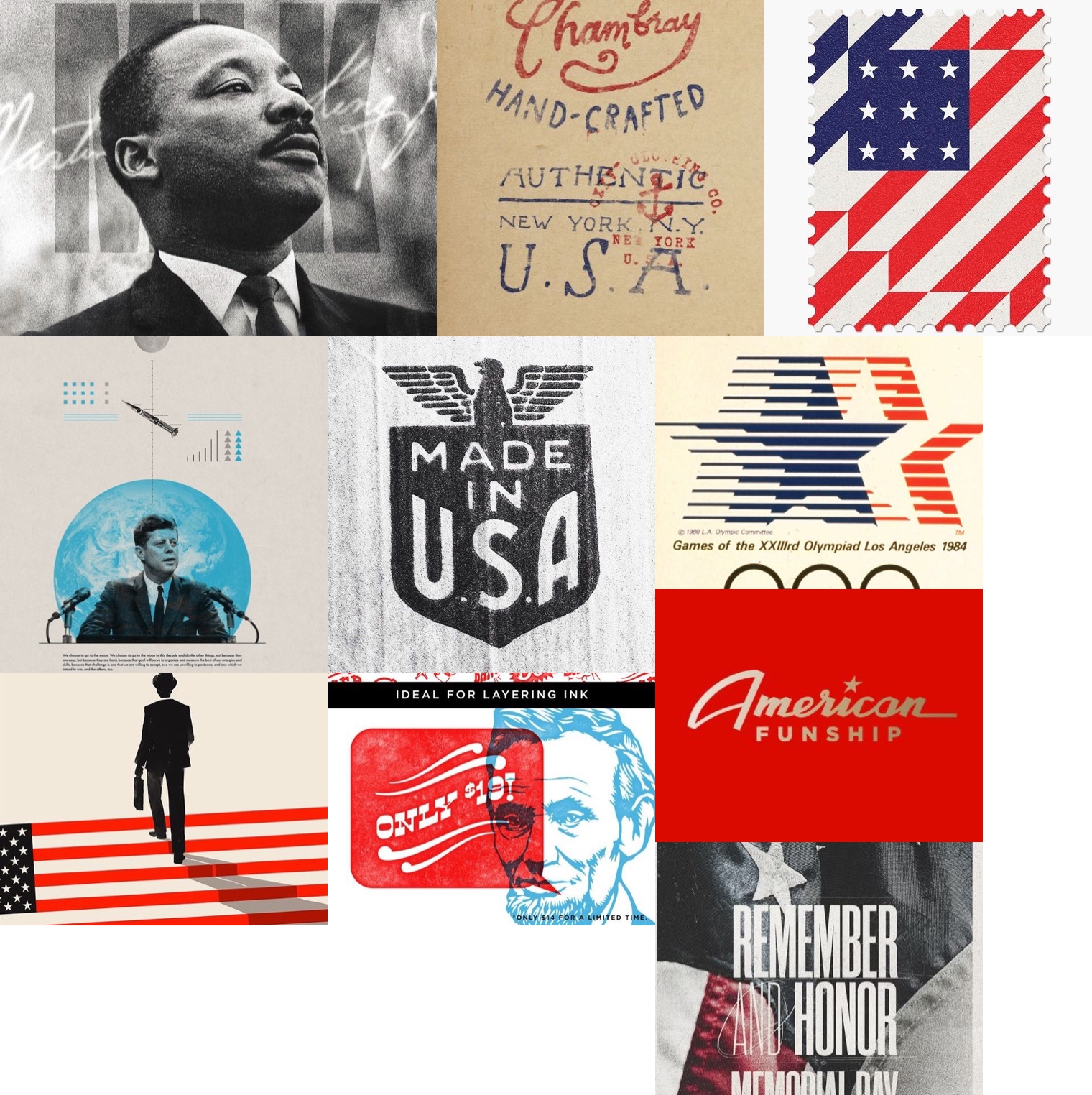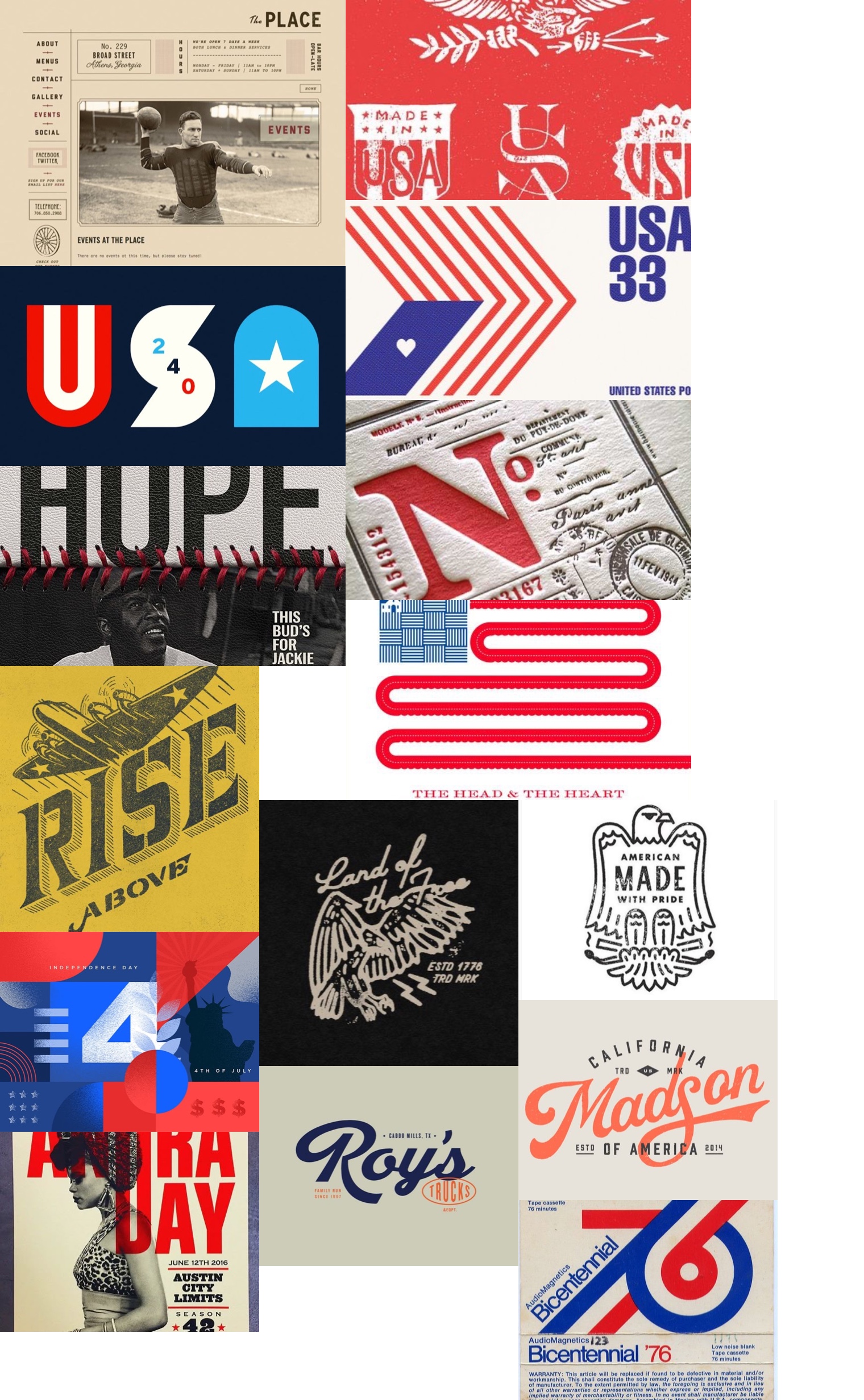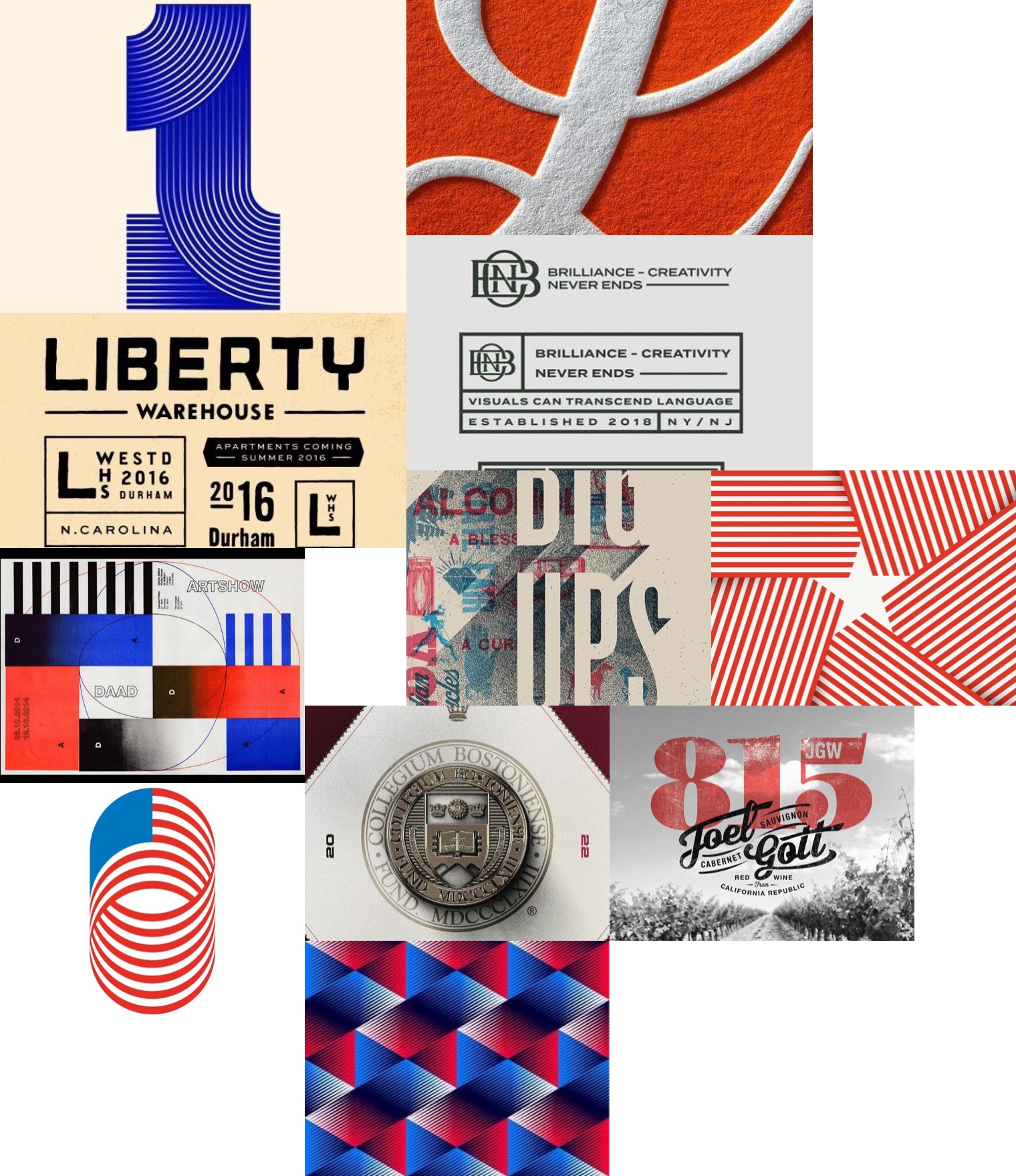What Does “American” Look Like?
Perception Drives How National Identity Is Recognized
For the Fourth of July, we asked a simple question: what does “American” look like in 2025? Using our perception mapping tool, participants rated 36 visuals drawn from patriotic and cultural design. The results pointed beyond style to substance, revealing a shared center anchored in civic ideals.
Study Design and Audience
The image set was assembled casually, sourced from Pinterest using terms like “America branding,” “American graphic design,” and “America typography.” The goal was to build a visual board that reflected common motifs: red, white, and blue palettes, vintage typefaces, stars, stripes, and iconic textures. It included posters, packaging, editorial layouts, and cultural ephemera, some overtly patriotic, others more decorative or nostalgic.
The test was distributed to a general audience without demographic segmentation. Respondents interacted with three APM screens, placing green (+) dots on images that looked American to them, and red (–) dots on those that did not. Based on their responses, the image set was sorted into three visual constellations: positive, negative, and neutral.
Parameters Overview
| Item | Detail |
| Test Topic | What Does American Look Like To You |
| Respondents | 51 |
| Audience | General social media audience |
| Image Source | |
| Search Terms | “Amrica graphic design,” “America branding” “American typography” |
| Tagging Method | None used for this test |
| Key Insight | Aethetic was less of a factor than theme. Positive responses clustered around images suggestive of civic duty and shared or public responsibility while negative responses clustered around more commercial or corporate applications of similar aesthetic. |
How to make an Audience Perception Map
Visual Findings
- The positive constellation included visuals tied to civic symbols and shared history: portraits of MLK and JFK, commemorative stamps, “Made in USA” typography, and Memorial Day posters. These designs conveyed service, leadership, and national ideals.
- The negative constellation used the same visual language, stars, stripes, patriotic colors, but in service of consumerism. Wine labels, logos, and branded graphics dominated, signaling commercial abstraction rather than civic meaning.
- The neutral constellation consisted of everyday Americana: vintage sports imagery, entertainment posters, signage, and familiar typographic forms. These visuals were culturally American but emotionally and ideologically muted.
Audience Perception Maps (APMs)
Pattern Analysis
Despite similar aesthetics across all three constellations, deeper patterns emerged. The dividing line was not style, but substance. Positive images were perceived as meaningful because they pointed toward shared responsibility and national memory. Negative images were perceived as hollow, their language more aligned with sales than symbolism. Neutral images, meanwhile, occupied a space of cultural familiarity without strong ideological pull.
The test revealed that even in a divided political climate, audiences still recognize the difference between standing for something and selling something. Civic symbols retain perceptual gravity. Consumer branding does not.
Positive, Negative, and Neutral Constellations
Insight Summary
This test began as a low-stakes, holiday-themed experiment. But its findings underscore the power of visual perception tools to surface deeper cultural truths. “American” is not a fixed aesthetic category. It is a layered, emotionally charged theme where meaning is shaped less by design choices than by collective memory.
Even a casually built test, when measured through shared perception, can yield insights with lasting relevance. In a moment where symbols are often contested or commodified, perception itself becomes a form of cultural data—a way of seeing not just what images say, but what they still mean.
Previous Studies and Results
Design Meets Data—Stay in the Loop
We’re just getting started. Subscribe below to get more studies, reflections, and visual data insights straight to your inbox
Join Our
Mailing List
Sign up to participate in interactive visual surveys and receive exclusive analysis reports on timely, trending topics—all from a visual perception perspective. You'll also get product updates, creative case studies, and smart ways to sharpen your visual strategy.

